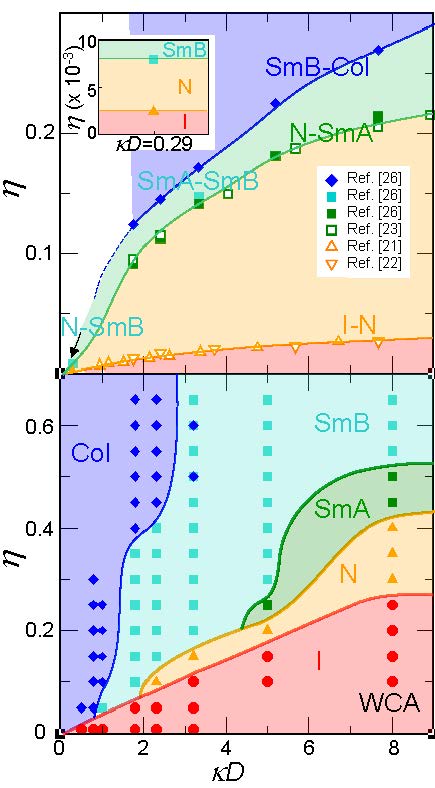In 1934, later Nobel laureate Eugene Wigner predicted the formation of a crystalline structure composed of electrons at low densities, stabilized by strong electrostatic repulsions — a phenomenon now known as the Wigner crystal. While this elusive state of matter has never been directly observed for electrons, its analogue has been realized in recent decades for spherical colloids — nanoparticles with nanometric dimensions and nearly perfect spherical shapes.
Until recently, the scientific consensus held that such crystalline ordering could not occur in systems of elongated, rod-like colloidal particles with high aspect ratios. However, a new study emerging from a SoftComp collaboration including Ca’ Foscari University of Venice, Italy, and University of Bordeaux, France, has overturned this assumption. The researchers demonstrated that, under conditions of low particle density and strong electrostatic repulsion, nearly monodisperse rod-like colloids spontaneously organize into a Wigner crystal–like structure.
This ordered phase is stabilized through a delicate balance: the minimization of electrostatic potential energy is complemented by the maximization of entropy associated with both longitudinal and transverse fluctuations of the rods. The result is a robust crystalline arrangement that combines electrostatic and entropic effects in a unique way.
The study’s findings were confirmed through unambiguous experimental observation and supported by comprehensive numerical simulations, providing both theoretical understanding and direct visual evidence of the phenomenon. This breakthrough not only extends Wigner’s original concept to anisotropic systems but also opens new avenues for designing self-assembled materials with tunable structural and dynamic properties.
Read more: Anop H. et. Al, Phys. Rev. Lett 134, 118101 (2025)
SoftComp partner: Ca’ Foscari University of Venice



